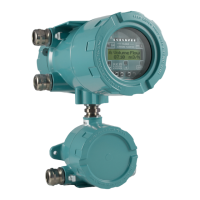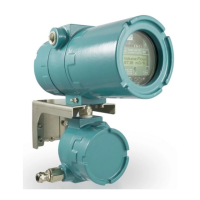7 Connection
7.4 Temperature probe FLUXUS F502TE
2020-05-29, UMFLUXUS_F502TEV1-5EN
60
7.4.1 Direct connection of the temperature probe
• Remove the blind plug for the connection of the temperature probe (see Fig. 7.13).
• Open the cable gland of the temperature probe. The compression part remains in the cap nut (see Fig. 7.14).
• Push the cable of the temperature probe through the cap nut, the compression part, the basic part and the reducer.
• Prepare the cable.
• Shorten the external shield and brush it back over the compression part.
• Insert the cable into the housing.
• Screw the sealing ring side of the reducer into the transmitter housing.
• Screw the basic part into the reducer.
• Fix the cable gland by screwing the cap nut onto the basic part.
• Connect the temperature probe to the terminals of the transmitter (see Fig. 7.13 and Tab. 7.10).
7.4.2 Connection with extension cable
• Remove the blind for the connection of the temperature probe (see Fig. 7.13).
• Open the cable gland of the extension cable. The compression part remains in the cap nut (see Fig. 7.14).
• Push the extension cable through the cap nut, the compression part, the basic part and the reducer.
• Prepare the extension cable.
• Shorten the external shield and brush it back over the compression part.
• Insert the extension cable into the housing.
• Screw the sealing ring side of the reducer into the transmitter housing.
• Screw the basic part into the reducer.
• Fix the cable gland by screwing the cap nut onto the basic part.
• Connect the connectors of the extension cable and the temperature probe.
• Connect the extension cable to the terminals of the transmitter (see Fig. 7.13 and Tab. 7.11).
Fig. 7.14: Preparation of the temperature probe
Fig. 7.15: Temperature probe
1 – red
2 – red/blue
3 – white/blue
4 – white
Tab. 7.10: Terminal assignment (transmitter)
terminal temperature probe
TF1, TX1 red
TF2, TX2 red/blue
TF3, TX3 white/blue
TF4, TX4 white
110 mm
7 mm
1 2 3 4
